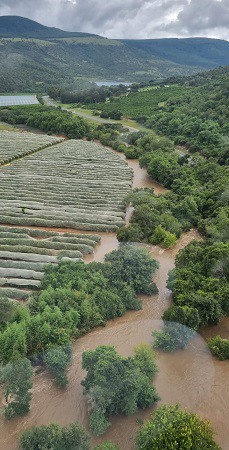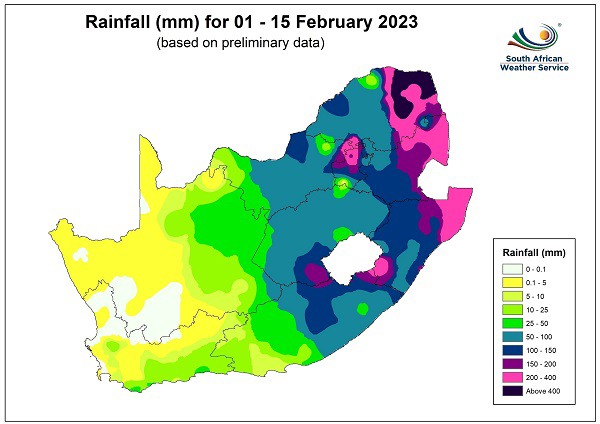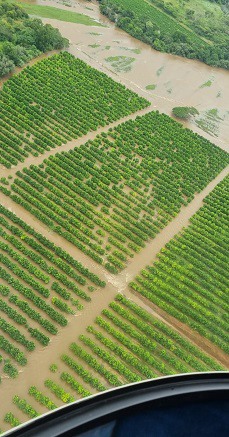 Widespread rain in the north has retarded the lemon harvest in Letsitele, Hoedspruit, Onderberg while Schoemanskloof, west of Nelspruit, reportedly saw some of the most flooding.
Widespread rain in the north has retarded the lemon harvest in Letsitele, Hoedspruit, Onderberg while Schoemanskloof, west of Nelspruit, reportedly saw some of the most flooding.
Over the past weekend some farms in northeastern Mpumalanga saw almost 400mm of rain due to a strong cutoff low system over South Africa. Fifty-year rainfall records were measured on some farms in the Mpumalanga Lowveld where mud slides have occurred, roads washed away and bridges were damaged.
According to the South African Weather Service, large parts of northeastern South Africa received between 200 and 400mm in the first two weeks of February.
Damage to pump infrastructure
The South African Weather Service had alerted the country to the impending disruptive rain. Farmers were in some cases able to remove their pumps from rivers before the flood waters came down.
Towards the border with Mozambique and northwards some areas received over 400mm during that period and there have been reports of damage to pumps and pump houses on fruit farms in southern Mozambique.
 Map used with permission from the South African Weather Service
Map used with permission from the South African Weather Service
Small amounts of rain have continued falling after the deluge of the weekend, but with the soil as saturated as it is, a little rain easily worsens the situation.
On the bright side, farmers can ease off on irrigation – that is, electricity usage – for the moment; the daily power cuts have been making it an onerous exercise to get through each day’s irrigation schedule.
Moreover, some early lemon producers reportedly had a size problem on their lemons which will now hopefully be solved by the rain.
No guarantee of full harvest in summer rainfall areas
Producers hold off on the lemon harvest because of the high risk of oleo, and at the moment they cannot get into their citrus orchards to spray.
"We have a plethora of tractors stuck in our orchards when it rains like this but we're used to that," says a citrus producer in Letsitele. In the area there is damage to an irrigation canal which producers will repair themselves.
 Another grower outside Nelspruit remarks: "You should know that once in every five or ten years you’re going to struggle with the harvest. It’s part of the risk of planting lemons in a summer rainfall area - you're just not guaranteed that you will be able to pick your whole crop every year."
Another grower outside Nelspruit remarks: "You should know that once in every five or ten years you’re going to struggle with the harvest. It’s part of the risk of planting lemons in a summer rainfall area - you're just not guaranteed that you will be able to pick your whole crop every year."
Says a marketer: "We were supposed to have already started with lemons a month ago but the rain is keeping us out of the orchards."
Not everyone is behind schedule; there are growers who have already finished their first lemon harvest, planning to go through lemon orchards for a second time by the beginning of next month.
The disruption in the lemon crop is an annoyance: the market in the Middle East has been receptive for fresh South African lemons which have been, FreshPlaza is told, outshining the late-season competitors still on the market.
“I expect a bubble in the market now that South Africa can’t pack lemons," a citrus industry source remarks. "Apparently Egyptian lemons are small. The market is waiting for the new season of South African lemons."
